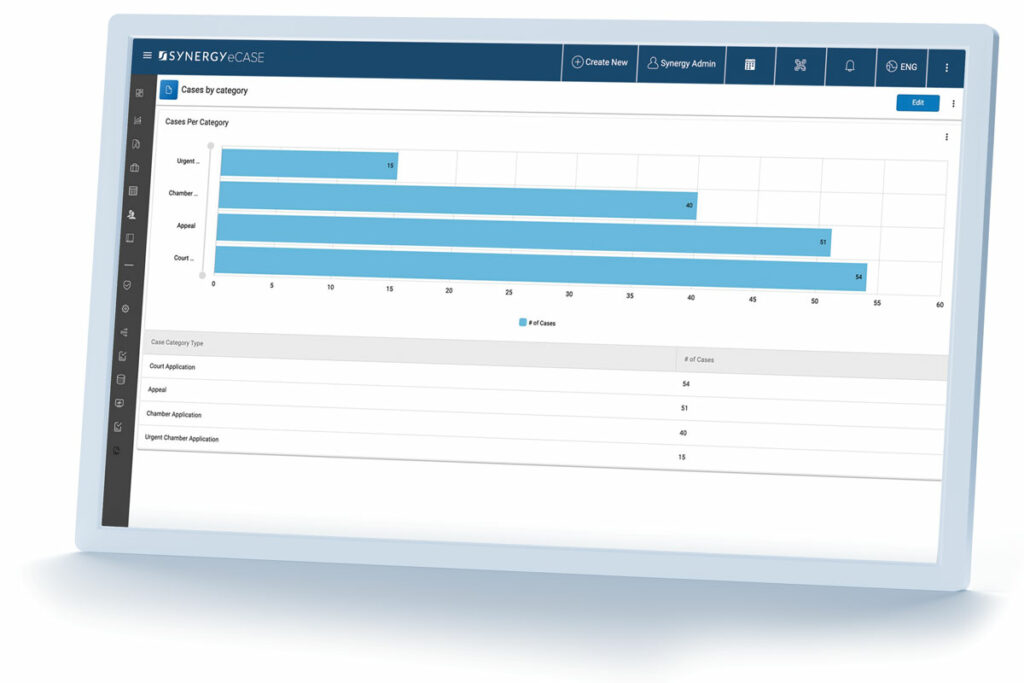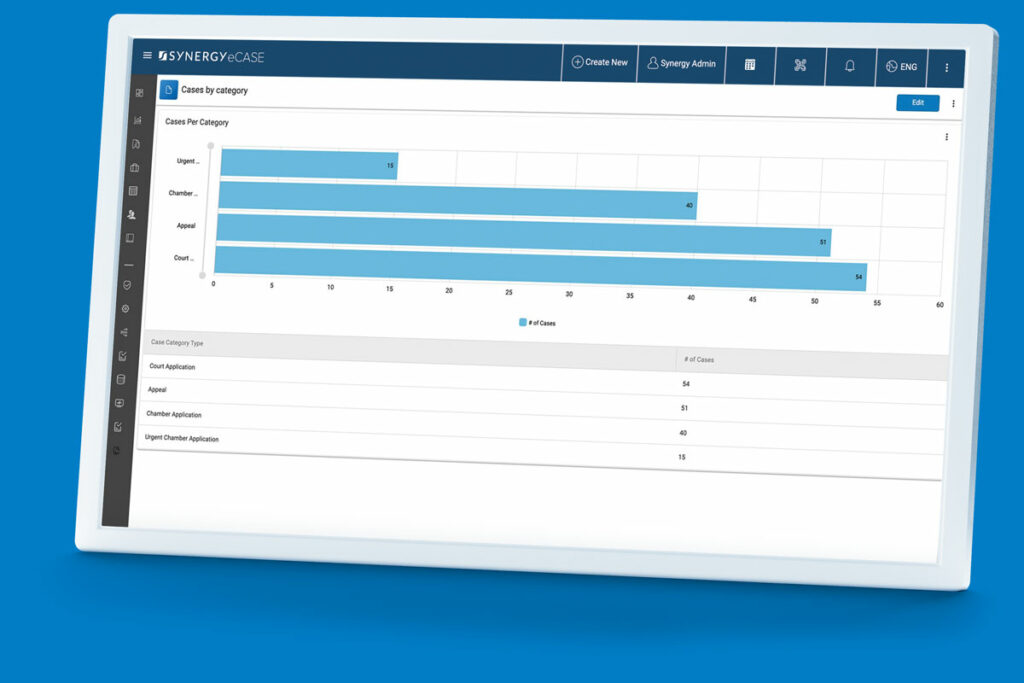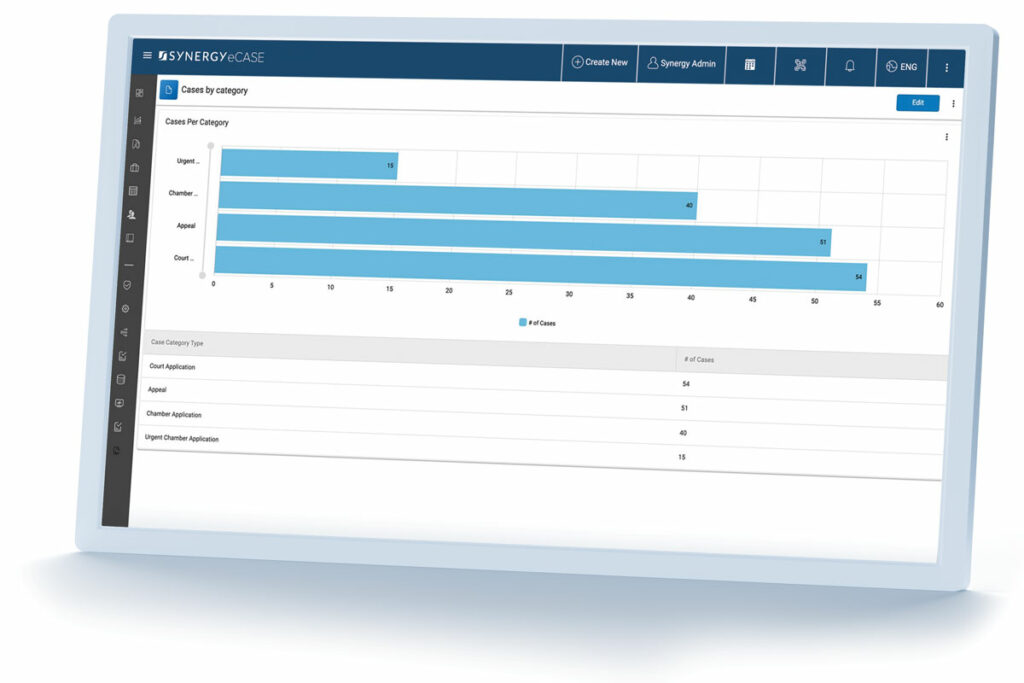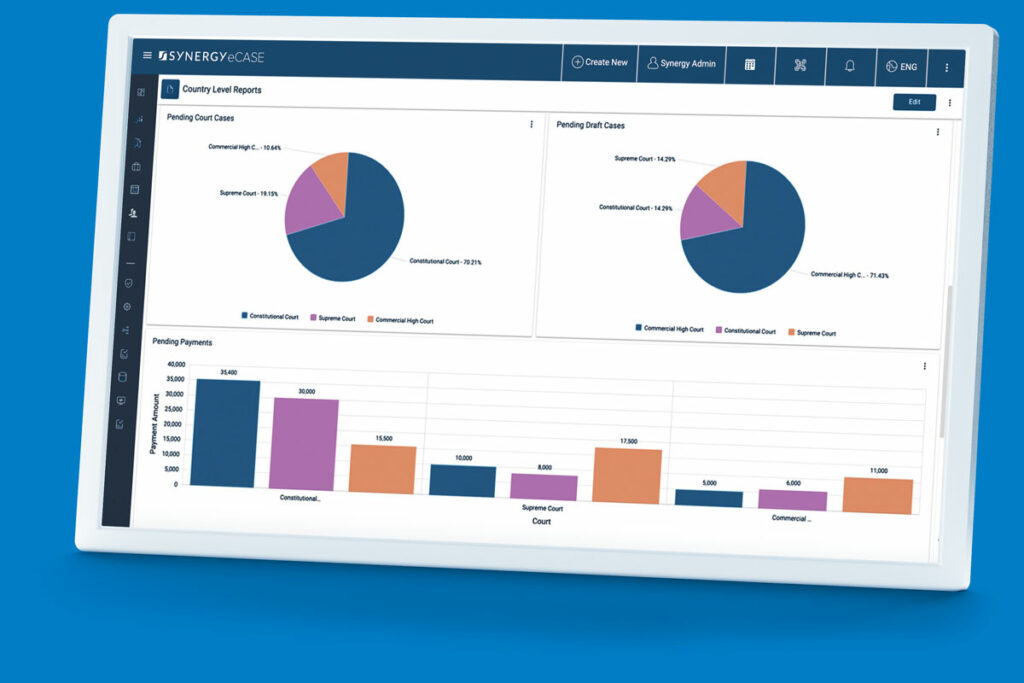Monitor Your Progress Towards Building A Just Society
Informed Decision Making
Resource Efficiency
Data-Driven Evaluation
Enhanced Accountability
Building a Peaceful, Just Society
Measuring judicial performance is often challenging. Synergy’s judiciary performance management software solution (JPMS) is a complete toolset designed to track progress and enhance judiciary performance, thus further improving the effectiveness of judicial systems.
It allows courts and agencies to monitor their progress through the combination of case-related statistics and staff performance evaluations. Courts and other sector institutions leverage this technology to monitor and analyze their performance at both the individual and institutional level, ultimately achieving their mission – to build a peaceful, just society.

Defining & Executing Judiciary Strategic Plan, Performance Measurement
The software solution enables the judiciary to define and manage the results framework, define performance indicators, activities and milestones, collect disaggregated data, and measure progress towards defined targets.
It also allows for weighted classification of objectives, activities, and milestones to clearly understand the importance of each towards achieving the overall vision. JPMS helps aggregate results across courts to evaluate the achievement of sector-wide strategic objectives.
Defining and Executing Judiciary Action Plan, Project Portfolio Management
JPMS allows courts and judicial agencies to centralize programmatic data in one place and have a single source of truth about their performance, projects, and activities. As strategic plans are broken down into implementable action plans and projects, JPMS helps to track progress of action plans through daily tasks and against set targets in relation to the strategic plan.
In the same way, comparative data over the years Is captured to show progress, workload, and budget execution. Judiciary can standardize and streamline how they design, plan, budget, and implement projects.


Integrating With Existing Court Management Systems
JPMS can be integrated with existing Case Management Systems (CMS) to link performance indicators to actual data based on filed and processed cases. Such integrated indicators include rate of overturned cases at appeal level, rate of case adjournment, rate of case backlog, disposal rate, etc.
The integration allows to measure court performance based on real CMS data disaggregated by case categories, judges, etc. and can help streamline court effectiveness and efficiency.
Measuring and Managing Court Staff Performance

Webinar: Performance Management for the Judiciary
Learn more about the core concepts behind the recent introduction of a judicial performance management system for the Judiciary of Rwanda.